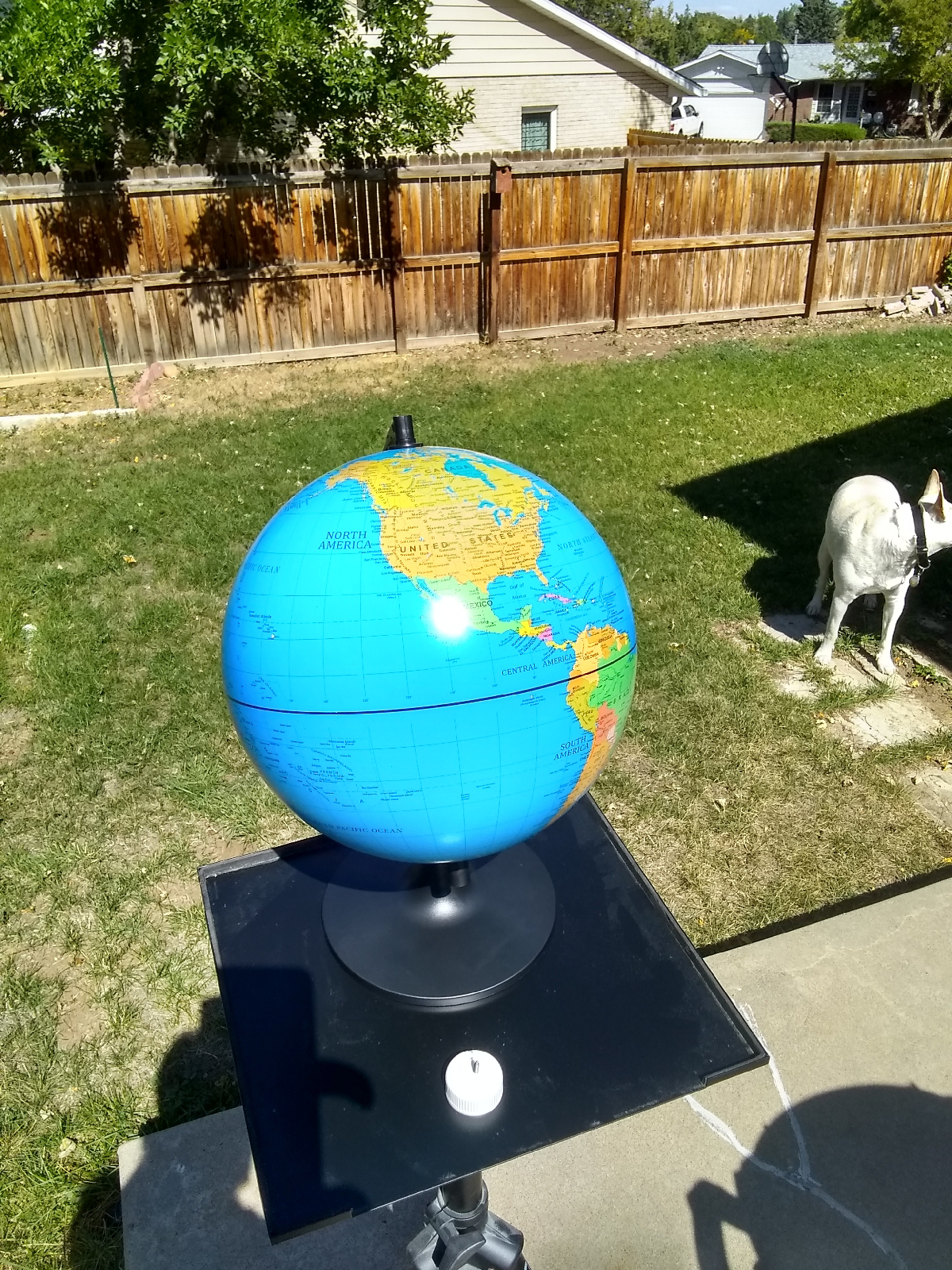Heh. In the Denver area, that's easy.
That's west. (See the Rockies?)
That's east. No mountains. In fact, when you top that hill, it's plains as far as you can see...all the way to the Mississippi River, 600 miles away. They don't call the Great Plains "Great" for nothing.
Facing the Rockies, north is to your right.
But why should you care?
Let's say that you're hiking somewhere other than Denver and you suddenly realize that you don't know where you are? Even if you have a map, you have to orient the map to your surroundings and the way you do that is to point north on your map (there will be a symbol pointing north just for that reason) toward geographic north.
You could just choose a direction and start walking. Surely a straight line will bring you to a road or stream or something you can follow out.
The problem there is that humans are very bad at walking in straight lines. They're much better at circles. People have a dominant side. If they're right handed, their stronger right side tends to push them to the left.
The way to walk in a straight line is to find a landmark and walk to it. When you get there, sight back to where you came from and extend that line of sight in the direction you're going, find another landmark, and walk there. Repeat.
But it's best if you have some idea of where you're going. Do you remember a road to the east of you? Is there a town somewhere to the southwest? Your reference is north.
When you face north, east is to your right, west is to your left, and south is behind you. And the sky will always tell you where north is.
At night, Polaris, the pole star is due north (actually, it is off by about a degree but it's good enough for navigating on land.) If you know any objects in the sky, you should know Polaris, the Big Dipper, and Orion. The Big Dipper is hard to miss because it looks very much like a...well, big dipper. The two stars in the outer edge of the dipper are called the "pointer stars" because they point straight up at Polaris.
(South of the equator, Polaris australia is a very dim star, so you have to find where it should be by following the upright of the Southern Cross.)
If you find Polaris, you've found north so just walk straight toward...oh, wait, it's night. You shouldn't be walking around in a strange forest at night. Just wait until morning and, okay, where was Polaris, again?
Well, look for moss on a tree.
Eh, that's not a reliable way to find north. Moss likes sunshine and most of the sun in the Northern Hemisphere comes in from the South so, yes, mosses like southern exposures but they grow where they can. In dense forests, you can't trust them.
So, here's one.
Set up a vertical post (what astronomers call a "gnomon" - a rod used to cast a shadow or sight some object) and, at the top of its shadow, drive another rod into the ground. In about an hour, come back and place another rod at the tip of the gnomon's shadow (it will have moved). Strike a line from the gnomon halfway between the other two rods - that points north. A line from the second rod to the third points east.
The idea is that the sun rises in the east and sets in the west, and in the northern hemisphere, the sun is to the South, so the sun's shadow points north and moves from west to east. The problem is that this method depends on when you mark the shadows.
In the picture above, a line drawn from the rod at the left to the nearest rod points due north because I placed them at solar noon (not at Daylight Savings Time noon). At solar noon the sun is due South.
If you place the rods an equal time before and after noon, this method works.
Don't know what time it is? Well, start before noon and place small markers every so often at the ends of the gnomon shadow - maybe use little rocks or stick small twigs in the ground. Where the end of the shadow is closest to the gnomon - that's solar noon. Draw a line from the gnomon to that point and you have north.
If you spend a lot of time outdoors and pay attention to where the sun is, you can get to where you can just look at the sun and tell about what time it is and where north is.
Keep in mind that, in the Southern Hemisphere, you have to look for where the southern pole star would be if you could see it, and the sun will be in the north during the day.








